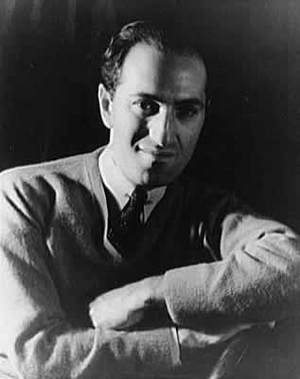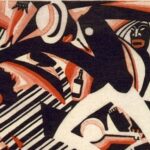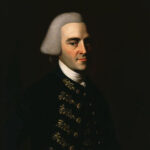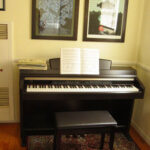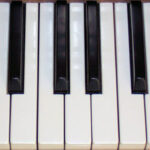Probably no other serious work written in America has exceeded the impact of George Gershwin’s “Rhapsody in Blue.” With Gershwin gone now over 70 years–the “Rhapsody” still gets played all over the world (and on United Airlines ads)–usually in differing arrangements to give the essence of the 25-minute-long piece. It’s arguably one of the most adaptable “classical” (or whatever you want to call it) works in all of music. After Herbie Hancock and Lang-Lang performed a highly-truncated, two-piano edition of the work on the Grammy Awards February 10–a lot of people probably wondered how many arrangements can be done of the Rhapsody. Well, numerous editions have been officially published and performed (including Gershwin’s original jazz band set-up for the orchestra). Most of those different configurations work, too, while almost always having some cuts if specifically played on TV when anything over five minutes (or actually one minute) is anathema in the eyes and ears of those born into the era of sound bites.
And, as with some of those arrangements of the Rhapsody–expert musical analysis used to bring the Rhapsody down in the musical structure department–despite being one of the most accessible classical piano works ever written next to Beethoven’s piano works or symphonies…
“Rhapsody in Blue” for solo piano…
You’ve probably heard the Rhapsody played solo at one time or another by various concert pianists you’ve never heard of in your local town. If you play piano and buy sheet music, you’re probably already familiar with the version published by Warner Brothers right after its debut in 1924 and stayed in print up into the 90’s. Now Alfred Masterworks has recently re-published the same solo edition that originally reduced the orchestral parts in with the piano parts. The musical consolidation was brilliant on this original edition–because it isn’t hard to learn at all. It’s not for beginners by any means, but any intermediate to advanced pianist can handle most of it solo. Several segments toward the end might be the biggest stumbling block when the orchestral parts add so much more to those passages. Nevertheless, played on a well-tuned grand piano–this solo edition is one of the best ways to play the entire work if you don’t have a large orchestra at your disposal…which is most everybody nowadays.
It should be noted that George Gershwin did a piano roll in the 1920’s playing the Rhapsody solo. He was known for adding in a lot of unexpected chords and other nuances–so the above-published solo version can’t necessarily be called the last word from the composer’s mind. If you hear your music teacher complain that Gershwin wasn’t allowed to change his own compositions on recordings–just politely tell him or her to refrain from saying such a thing.
Incidentally, Oscar Levant (Gershwin’s best friend and loyal performer of Gershwin’s piano works for decades) played a solo version for years when he did concerts. That version had a lot of his own add-ons and nuances–but it was never published. Levant played Gershwin’s piano works with a frenetic style that was accurate for only one reason: George Gershwin played them the same way in concerts and parties. Strange how a lot of performers since then don’t always play the Rhapsody and his other piano works that way.
The original Gershwin configuration of small jazz band and one piano…
Because the Rhapsody was a nod to jazz crossing over into classical realms, Gershwin originally intended the orchestral parts to be played by a small jazz band. If you’ve ever heard that version, it seems quite thin and choppy compared to the fuller orchestral accompaniment that didn’t happen until later (and not under Gershwin’s pen). Most people probably know that 1920’s bandleader Paul Whiteman commissioned Gershwin to write the Rhapsody when Whiteman was planning an ambitious concert in NYC showcasing a hybrid jazz/classical idea. A few successful experiments were being done already with this in the NYC concert scene. Gershwin was still cutting his teeth on Broadway and was in a new frame of mind to expand his horizons with possible classical works. Thanks to Gershwin’s melodic abilities–the partnership of him and Whiteman ultimately resulted in one of the biggest innovations in American music. When you hear Whiteman’s jazz band with Gershwin’s piano on the original 1924 acetate recording, though, you can tell this was definitely the boisterous crackle of the jazzy 1920’s.
So many people have been used to hearing the one with full orchestra that they might think the original Rhapsody almost sounds pedestrian in contrast featuring mostly wind instruments, banjos, saxophones…and even (gasp) an accordion. The famous composer/arranger Ferde Grofé (who wrote the ubiquitous “Grand Canyon Suite”) wrote these parts originally for Whiteman’s band due to Gershwin’s lack of orchestral-writing knowledge then–and while continuing to refine those parts as the piece evolved. Give credit to Grofé, too, for writing the original full orchestra parts for the Rhapsody in 1942. Gershwin never heard it this way in his lifetime, but that’s the way you usually hear it today other than the occasional historical concerts who want to perform it in its original score form.
Of course, when it premiered with that jazz band sound at Aeolian Hall in NYC (Feb 12, 1924)–most critics didn’t get it as you might expect. A lot of important people were in the audience, however. Historical records say that Sergei Rachmaninoff was in the audience–and you can hear some influences of the Rhapsody in some of his later piano works after 1924. If you’re subtly influencing some of the most influential modern composers of the time–you know you’re doing something right.
One of the most fascinating (and little known) things about the original configuration and the night of the premiere itself is that Gershwin improvised several sections of the Rhapsody. Grofé had inscribed on all the orchestral parts: “wait until nod”–meaning that the band would just sit and wait until Gershwin finished his inventing and then would pick up at a certain measure when Gershwin gave that nod.
This procedure truly gave the work a hint of improvisational jazz if making the original performance a mystery as to what Gershwin played exactly. It’s too bad he didn’t allow those improv sections to stay in the score–but he instead wrote them down later after supposedly remembering most of what he created on the spot during the concert.
A more modern jazz arrangement…
Blind pianist Marcus Roberts once did a jazzier recording in the mid-1990’s with the Lincoln Center Jazz Orchestra. I highly recommend this just for its amazing playing and invention by Roberts who manages to tap into his harmonic imagination as a lot of blind pianists can do. Purists, though, should be aware that this was one of the most innovative re-inventions of the Rhapsody to date so it fit a more modern sense of jazz. Some people still gripe if anybody changes a single note of the Rhapsody.
Ironically, Gershwin probably would have approved of the Roberts recording–because he understood the act of evolving in jazz and probably would have done the same thing with the Rhapsody had he lived into the age of more modern jazz sounds and harmony. He would have been feted then, too, for almost single-handedly creating modern jazz harmony (30 or more years ahead of time) in many of his piano works.
More two-piano arrangements…
The two-piano take by Herbie Hancock and Lang-Lang on the 2008 Grammy Awards must have been adapted by someone (so far unknown), because both Hancock and Lang-Lang played some chords that aren’t in the original score. When Gershwin wrote his first drafts, though, he originally wrote it out in two-piano form so he could rehearse it with another pianist. Ordinarily, the second piano would stand in for the orchestral part. But other artists who’ve done two-piano editions have added little things in there to make it stand alone from other recordings.
Perhaps the most famous two-piano recording of it was from the LaBeque Sisters (Katia and Marielle) back in the early 1980’s. You seldom hear it that way in professional recordings–even though the recent family piano dynasty The 5 Browns managed to do a 5-piano arrangement recording recently that sounds amazing.
The criticisms of the Rhapsody…
If you think there’s still overt criticism of the Rhapsody today–there really isn’t any. The Rhapsody works on its own terms in our era and doesn’t need a snooty critic to say that it doesn’t have perfect musical form. Outside of the ignorance of critics in 1924 after it premiered–one of the most astute criticisms was years later from the legendary Leonard Bernstein. Somehow, Bernstein was able to give constructive criticism while also managing to state concurrently that he loved the Rhapsody.
Most of his comments relate to the idea that the work is mostly pictorial interludes (or “paragraphs” as Bernstein called them) stuck together into a whole. Bernstein accurately described the Rhapsody as something that could be truncated in any particular form and still work at a level of familiarity and based on the instantly-recognizable harmonic foundations and themes. In fact, Bernstein thought Gershwin was the greatest melodist of his era–akin to Tchaikovsky’s melodic and harmonic innovations.
Strange that Bernstein didn’t mention Gershwin’s more considerable contributions to modern jazz harmony–considering Bernstein dabbled in jazz idioms himself. But when he wrote his criticisms of the Rhapsody in the mid 1950’s–modern jazz harmony hadn’t been fully formed yet…at least in the mainstream.
____
As proved at the 50th anniversary of the Grammy Awards–“Rhapsody in Blue” still binds disparate elements together into something extraordinary. It incorporates exactly what Gershwin intended for it: To be a “musical kaleidoscope of America.” Even in its frustratingly truncated forms at the mercy of the easily-bored TV viewer–it’s a work that attracts just about any age group and made personal by every race on the planet.
